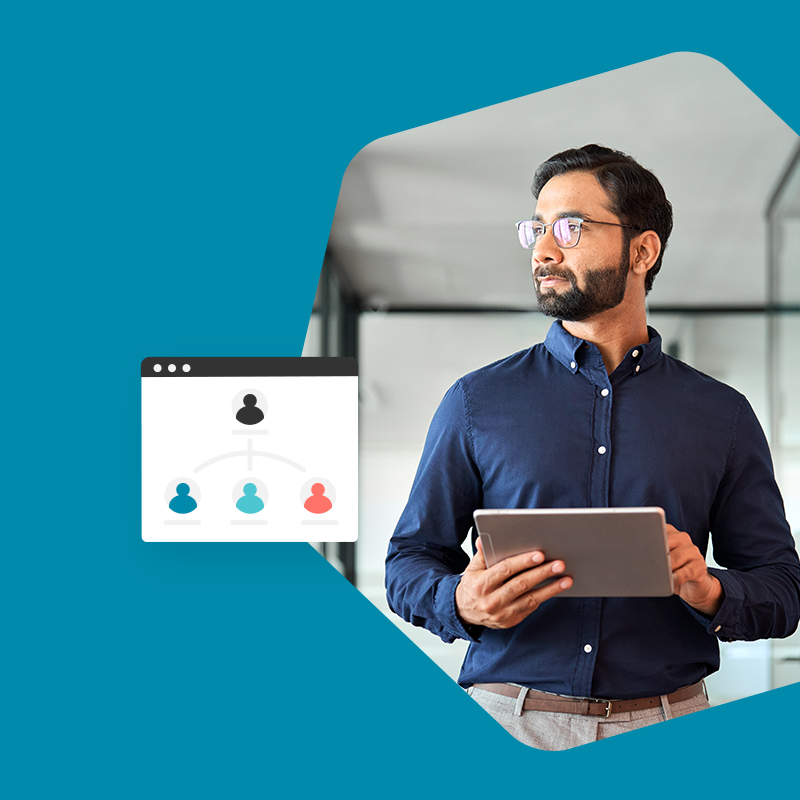In a competitive labor market where candidates have the favor, organizations need to have a strategic plan in place to keep them from losing their employees to better offers. The Department of Labor reports that the current unemployment rate of 3.6% is the lowest it’s been since 1969. For college graduates, that number is even lower at an impressive 2.1% In a prosperous marketplace, workers won’t hesitate to voluntarily leave their jobs if they believe there are better opportunities available. The combination of high turnover rates and a lack of proper training leads to an increase in the skills gap, leaving teams under-equipped, and companies paying the price in revenues. The result – a frustrated workforce, and the cycle continues. In markets like the current one, it’s on the employer to build a workplace environment where employees are satisfied, empowered, and don’t feel compelled to look for something better.
Organizations are addressing their concerns by going on the offensive – focusing on company culture, marketing their differentiators to job seekers, and increasing compensation to stay competitive. But it’s not enough to provide a kitchen full of snacks and stellar benefits packages. Employees want to know that they’re making a real contribution and they’re seen as valuable to their company. This kind of support and feedback takes planning and structure. To accomplish that, you’re going to need a solid strategy.
By implementing strategic workforce planning (SWP), organizations can build out a comprehensive talent management process that supports both HR objectives and employees’ needs during hiring, training, and talent development. According to Datis’s 2018 State of the Workforce Study, the majority of businesses expect to see significant growth within their teams, but only 34% of them have an updated employee engagement planning guide.
Every organization has unique problems, priorities, and structure, so SWP is a powerful method to ensure your hiring, training, and employee experience initiatives are interwoven with business objectives and revenue goals. And beyond that, SWP is a process that can be used to improve internal HR performance and company culture.
Defining SWP
SWP helps HR leaders and managers by creating a roadmap for key strategic elements like:
- Aligning hiring goals with long-term needs
- Assigning implementation and follow-through responsibilities to the right leadership — from the executives setting the strategy to choosing your best managers to guide the process
- Training and developing teams and individuals
- Increasing retention and reducing rapid staff turnover
- Building a company culture that is reflected across teams and within individuals
- Creating employee engagement champions at every role in the business
- Identifying and evaluating deficiencies and their potential solutions to streamline employee improvement
- Building productive, high-performing teams that lead to increased revenue
According to a Deloitte study in 2017, 80% of executives rated employee experience as either important or very important, yet a mere 22% of them expressed confidence in their employees’ level of satisfaction. Perhaps more concerning, 59% of executives say they aren’t even ready to address the challenge if they wanted. Indeed, without proper SWP, companies can struggle to pull a siloed HR department into a more holistic vision of their overall business objectives; one that uses training and personnel strategies as a foundation to support organizational productivity.
So, what contributes to good SWP and how does it affect your business? More than just job training and a positive work environment, truly strong SWP also accounts for creating supportive management teams, opportunities for growth, and building trust in leadership. When you hit all the key points, employees feel empowered, supported, upwardly mobile, and that they’re working towards a common purpose they believe in. This kind of innovative workforce builds an impenetrable company culture that works efficiently and effectively in pursuit of company goals.
Implementing SWP
Once you prioritize your objectives, the next step is to figure out how to best utilize SWP. There needs to be a systematic approach, otherwise, your plan will fall short. A good method to implement is to follow a model that makes sure you are properly researched beforehand and prepared to act on results as your plan plays out.
Begin by getting to know your employees. You may have an idea where the holes are and what your hiring needs are, but how well do you understand what’s happening in the teams you already have? Where are your future managers and leaders? Who’s falling between the cracks? Don’t just think about the people you don’t have yet, but also who needs what within the talent that’s there now.
Also, consider how your staffing needs might change in the future. You know what you need now and what you’ve needed historically, but how do you anticipate SWP will impact your hiring forecasting and the way you staff your organization down the road? The last thing you want is to create the perfect plan, only to discover you’ve misallocated future dollars because you failed to account for the way your processes would change as a result.
Additionally, you’ll need to consider the tools you need to monitor progress. Merely implementing SWP is not enough in and of itself to shape your company culture if you aren’t doing anything to analyze how it’s been received. Coupling SWP with effective employee engagement tools will provide you with actionable insights to gauge how employees are responding to the new standard, and you’ll be able to pivot in real time to accommodate any issues you come up against along the way. In doing so, you’re giving your employees the opportunity to be part of the process, presenting them with a feeling of ownership. And as they see leadership make changes based on their feedback, they’ll see that their input really matters and will continue to contribute. See? It’s working already.
People Analytics and SWP
How do you get the best feedback from your employees? They aren’t going to give that up voluntarily. You have to ask for it. Finding ways to periodically retrieve data from your staff that provides real insights is the key to successfully shifting the company culture. Good employee engagement tools will tell you what’s working and what isn’t, in real-time, and give you actionable data that will inform the ways in which you need to adapt your strategies.
Engaged employees lead to higher productivity and a more skilled workforce. All that circles back to your bottom line. You’re spending less money making up for turnover or sunk costs due to under-performing workers, which you’ll be able to pay forward into the hands of your employees. Employees that feel appreciated are more engaged, and an engaged worker is a productive worker. It’s a self-sustaining cycle. Your staff is the backbone of your organization, and when you plan for your workforce, you’re planning for your whole business.






